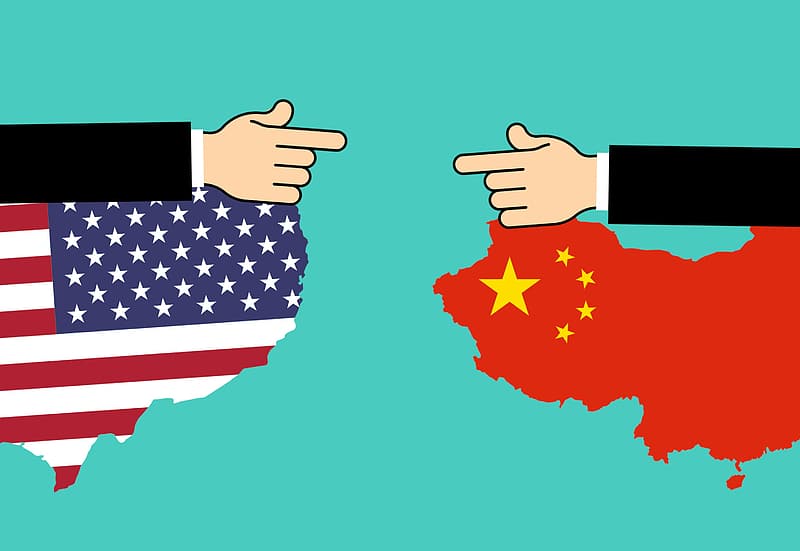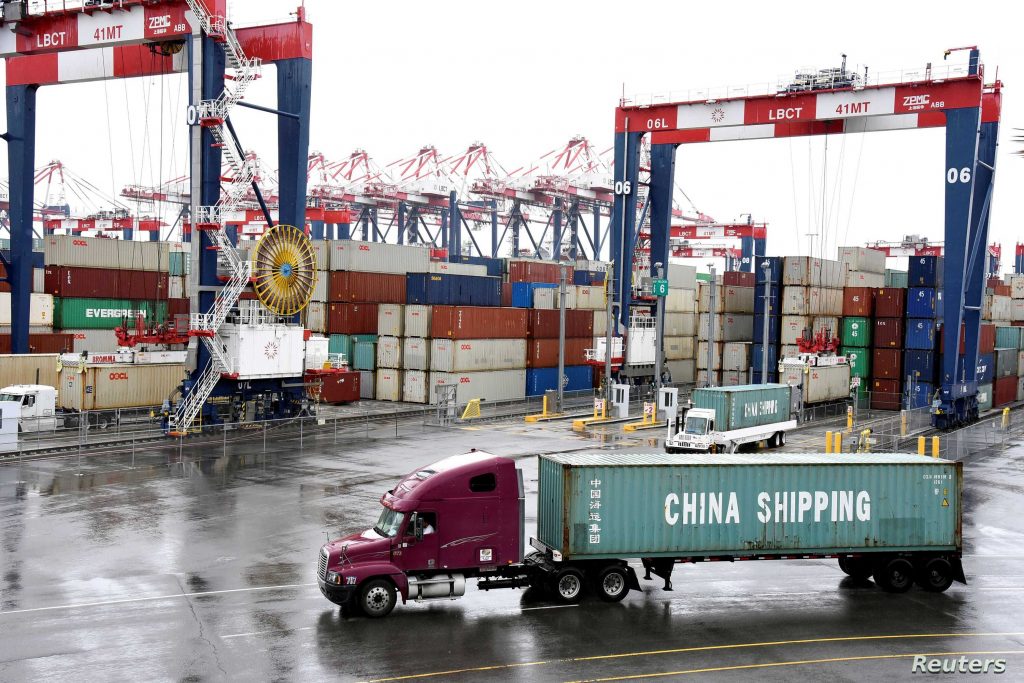Summary: The US-China trade war which has gone on for several years does not seem to end despite the change of guard at the White House. The war that started during the Trump regime has all indications that it will continued even under Biden. The trade war which started with the imposition of duties by US on imports from China in July 2018 and China’s counter measures, had not stopped despite several rounds of discussions and deals, the latest being the January 2020 agreement.
While the trade war will be guided by US self interests and China’s counter claims, the Biden administration will be tough on China so as not to give credence to Trump’s allegations that Biden will go soft on China. The trade war is also an indication of the growing clout of China in the world which wants to position itself as a superpower in all aspects.
In the emerging multi-polar world with countries like China and India rising on the global scale in all spheres, trade wars will hurt the established economies as they increasingly depend on growing countries for many products and materials. With globalisation failing to address the aspirations of the developing countries, mutual respect and co-operation is the way forward.
The US China trade war does not seem to end despite change of guard at the White House. In an interview with The New York Times, Biden said his trade policies will focus on “China’s abusive practices”, including “stealing intellectual property, dumping products, illegal subsidies to corporations” and forced technology transfers. Though the phase-one agreement was reached between the two sides on January 15, 2020, tensions and counter claims have persisted.The ongoing economic conflict between China and the United States began when President Donald Trump in 2018 began setting tariffs and other trade barriers on China with the goal of forcing it to make changes to what his administration called are “unfair trade practices” and intellectual property theft.
The Trump administration stated that these practices contributed to the US–China trade deficit, and that the Chinese government requires transfer of American technology to China. Subsequent to the US trade measures, China responded with retaliatory tariffs while the Chinese government accused the Trump administration of engaging in protectionism. The Chinese government argues that the US government’s real goal is to stifle China’s growth, and that the trade war has had a negative effect on the world. The Chinese government has blamed the American government for starting the conflict and said that US actions were making negotiations difficult.
The US in July 2018, placed 25 per cent duties on around US$34 billion of imports from China, including cars, hard disks and aircraft parts. China retaliates by imposing a 25 per cent tariff on 545 goods originating from the US worth US$34 billion, including agricultural products, automobiles and aquatic products. In August the same year, Washington imposed 25 per cent tariffs on another US$16 billion of Chinese goods, including iron and steel products, electrical machinery, railway products, instruments and apparatus.

In September 2018, China responded by applying 25 per cent tariffs on US$16 billion of US goods, including Harley-Davidson motorcycles, bourbon and orange juice. US then placed 10 per cent taxes on US$200 billion of Chinese imports. China responds by placing customs duties on US$60 billion of US goods.
As the trade war threatened to escalate further, Chinese Premier Xi Jinping and US counterpart Donald Trump agreed to a ceasefire at the G20 summit in Argentina, with the US suspending a tariff from 10 per cent to 25 per cent on US$200 billion of Chinese goods that was due to come into force on January 1. China too responded in kind by suspended tariffs on US-made cars and car parts for three months from January 1, 2019 and also resumed its purchase of US soybeans.
However, the two sides did not arrive at a conclusion and in May 2019, the trade negotiations broke down. The US once again increased tariffs on US$200 billion worth of Chinese goods from 10 per cent to 25 per cent. China responded by announcing that it will increase tariffs on US$60 billion worth of US goods from June 1 that year. US Department of Commerce announced the addition of Huawei to its “entity list’, which effectively banned US companies from selling to the Chinese telecommunications company without approval. Not to be taken for granted, China announced that it will establish its own unreliable entities list and in June of 2019 it increased tariffs on US$60 billion worth of US products.
In June 2019, Xi Jinping and Donald Trump met on the sidelines of the G20 Summit in Japan and agreed for a trade war truce. The truce delayed the imposition of new US tariffs of up to 25 per cent on US$300 billion worth of Chinese goods. But in August, Donald Trump announced plans to impose a 10 per cent tariff on US$300 billion of Chinese goods from September 1 as it designated China as a “currency manipulator” after the yuan weakened to below 7 to the US dollar. Donald Trump then announced that planned levies on many of the US$300 billion of Chinese products threatened to start in September 2019 have either been delayed or removed. Levies of 10 per cent on US$155 billion of products such as including phones, laptop computers and video game consoles was delayed until December 15.
China did not take the US measures in stride and announced tariffs of 5 and 10 per cent on US$75 billion of US goods from September 1 and December 15. China also confirmed it will reinstate tariffs on US cars and car parts from December 15. China then announced that it will offer exemptions to 16 types of US imports from additional tariffs, which include products such as pesticides, animal feeds, lubricants, and cancer drugs. In response to Chinese standing down, Donald Trump agreed to delay new tariffs on US$250 billion worth of Chinese goods as a good will gesture for the 70th anniversary of the People’s Republic of China. China too announced that it will exclude imports of US soybeans, pork, and other farm goods from additional trade war tariffs.
In December 2019, China and the US agreed to a phase one trade deal days before a 15 per cent tariff was set to be imposed on around US$160 billion of Chinese goods. The US agreed to reduce tariffs on US$120 billion of Chinese goods imposed in September. China suspended tariffs on US goods also due to come into force on December 15. Subsequently, in January, 2020 China and the US signed a phase one trade deal. As part of the deal, China agreed to buy an additoinal US$200 billion of American goods and services over the next two years. The deal results in the suspension of a planned December tariff on around US$162 billion in Chinese goods, with an existing 15 per cent duty on imports worth around US$110 billion halved. China halved additional tariffs on US$75 billion of American products imposed in 2019, including automotive and agricultural goods like pork, chicken, beef and soybeans, chemicals, crude oil, whiskey, and seafood. China also lifted an import ban on live poultry products from the US.
In May this year, in a measure to further placate the US, China announced a second batch of trade war tariff exemptions covering 79 American products, including ores, chemicals and certain medical products and allowed imports of barley and blueberries from the US. Consequently, the US Department of Agriculture announces that China booked its biggest single-day corn purchase, buying 1.762 million tonnes. Dozens of US imports from China, including disposable face masks, respirators, Bluetooth tracking devices and musical instruments, were granted short extensions to previous tariff exemptions until the end of 2020. US customs agency issues Withhold Release Orders, banning cotton, apparel, hair products and computer parts from four Xinjiang companies and in September, 2020, China decided to exempt additional tariffs on a batch of 16 US products, including shrimp seeds, grease oil and medicines, for another year.

However, China has not been able to fulfil its purchase commitments under the deal. China’s year-to-date total imports of covered products from the United States were valued at US$75.5 billion, compared with a prorated year-to-date target of US$137.3 billion. Over the same period, US exports to China of covered products totalled US$70.3 billion, compared with a year-to-date target of US$125.4 billion, the Peterson Institute for International Economics (PIIE) report said.
In October, a month before the US presidential election, China’s trade surplus with the US rose 18.7 per cent from a year earlier to US$31.35 billion, due in part to a surge in US imports of supplies used to combat the coronavirus outbreak, as well as electronic equipment to support the work-from-home movement. This was up from US$30.75 billion in September and was 46.5 per cent higher than when Trump took office in January 2017.
The Wall Street Journal in October 2020 published an analysis which found the trade war did not achieve the primary objective of reviving American manufacturing, nor did it result in the reshoring of factory production. Though the trade war led to higher employment in certain industries, tariffs led to a net loss of U.S. manufacturing jobs. The trade war reduced the United States’ trade deficit with China in 2019, but this trend reversed itself in 2020, with the trade deficit increasing back to its pre–trade war level, while the United States’ overall trade deficit has increased.
Reports from China suggest that the government advisers have asked that Beijing would seek to renegotiate the trade deal as the January deal was unrealistic for China to implement. International and US economic experts counter that it would be wishful thinking for Beijing to try to renegotiate the trade deal in the near term. They also opine that a significant shift in current US policies towards China is “unlikely” even during the early months of the Biden administration as any such move would validate Trump’s claims that Biden will go soft on China. Though the spokespersons for the Chinese government have not spoken in public against the US administration, People’s Daily, the official newspaper of the Chinese Communist Party, has stated that China will be able to withstand the trade war, and that Trump’s policies are affecting American consumers.
The trade war is also an indication of the growing clout of China in the world which wants to position itself as a superpower in all aspects. Many experts of geopolitics see China’s response to US as its assertion of dominance. Hong Kong economics professor Lawrence J. Lau argues that a major cause of the trade war is the growing battle between China and the U.S. for global economic and technological dominance. He write”It is also a reflection of the rise of populism, isolationism, nationalism and protectionism almost everywhere in the world, including in the US.” In the emerging multi-polar world with countries like China and India rising on the global scale in all spheres, trade wars will hurt the established economies as they increasingly depend on growing countries for many products and materials. With globalisation failing to address the aspirations of the developing countries, mutual respect and co-operation is the way forward.
